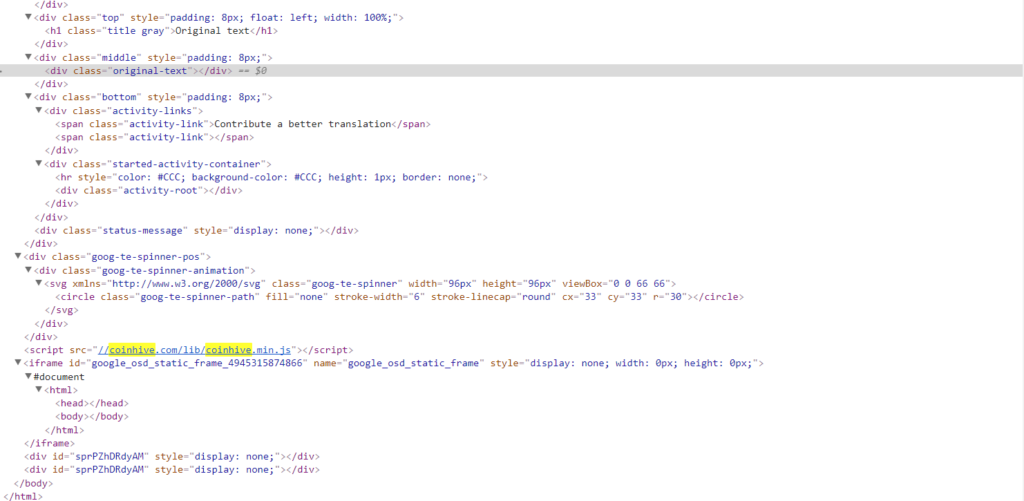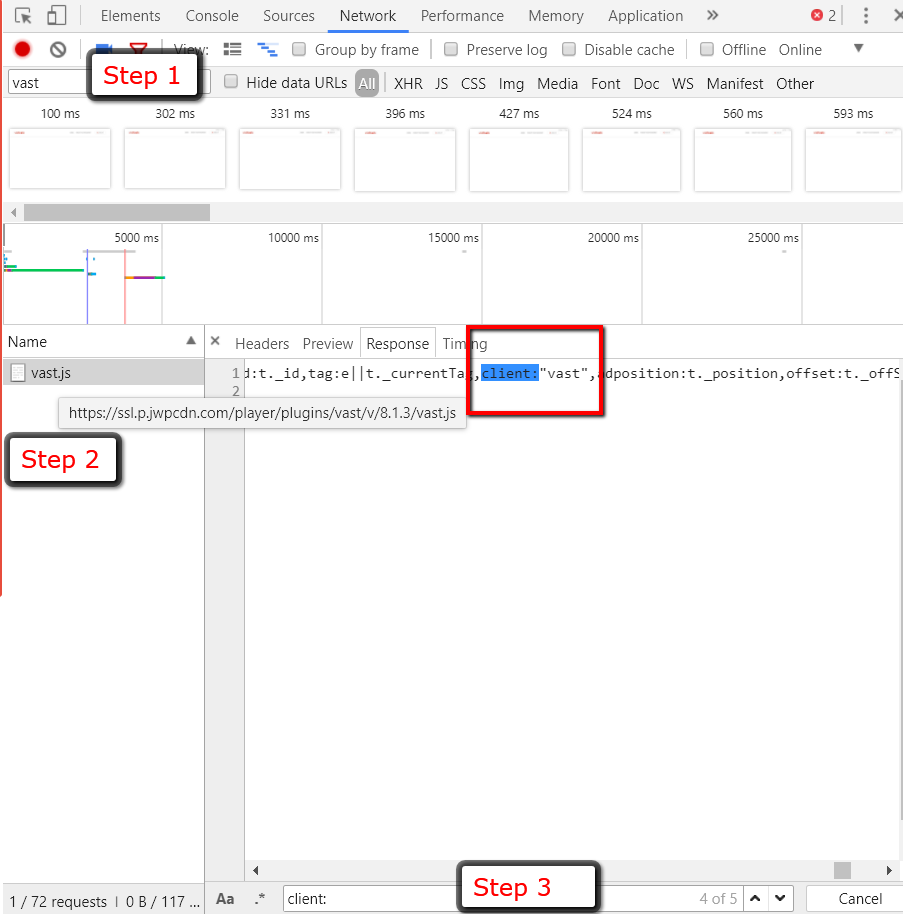Introduction
The Media Rating Council (MRC) accreditation certifies that Display & Video 360 (formerly DoubleClick Bid Manager or “DBM”) platform adheres to the industry standards for ad serving and ad serving measurements, and that its processes supporting this technology are accurate. This applies to Display & Video 360’s measurement technology which is used across all devices: desktop, mobile, and tablet, in both browser and mobile apps environments.
This document is a summary of the data collection, measurement and filtration methodologies of Display & Video 360, and its associated processes.
What is Display & Video 360 accredited for?
● Impressions for Desktop, Mobile App, and Mobile Web Display
● Impressions for Desktop and Mobile App and Mobile Web Video
● Some Active View (viewability measurements)
Video and Display for Desktop, Mobile App and Mobile Web
■ ActiveView: eligible impressions
■ ActiveView: measurable impressions
■ ActiveView: % measurable impressions
■ ActiveView: not measurable impressions
■ ActiveView: viewable impressions
■ ActiveView: % viewable impressions
■ ActiveView: not viewable
■ ActiveView: impressions distribution (not measurable)
■ ActiveView: impression distribution (not viewable)
■ ActiveView: impression distribution (viewable)
● Clicks for Desktop, Mobile In-App, and Mobile Web Display and Video
● Click rate for Desktop, Mobile In-App and Mobile Web Display and Video
● A current listing of DBM’s measurement is available on the “Metrics and filters” page in the Display & Video 360 Help Center
What is not accredited
Topics that are not covered under this specific accreditation include:
● Display & Video 360’s bidding aspects
● Other Google ad serving solutions and products
● Other Google products and services
● Other Display & Video 360 Metrics
What is Display & Video 360?
The Display & Video 360 (formerly DoubleClick Bid Manager or “DBM”) platform provides users with the ability to choose from a range of programmatic buying options, including programmatic guaranteed, direct deals, and open exchanges. Additionally, Google’s proprietary algorithms automatically adjust bids to meet advertiser-specific campaign goals.
Advertisers can utilize Campaign Manager (formerly “DoubleClick Campaign Manager” or “DCM”) or third-parties as their ad server through the Display & Video 360 bidding and reporting platform. For cases where you use Campaign Manager as your ad server, we encourage you to also review the Campaign Manager Description of Methodology
Business Partner Qualification
Display & Video 360’s business partners include clients (e.g., advertisers and agencies), ad exchanges that Display & Video 360 communicates with as part of real-time bidding transactions, and third-party ad servers utilized to serve Display & Video 360 client ads. Google performs both initial and ongoing business partner qualification procedures for these entities.
All partners that use Display & Video 360 need to adhere to Google’s platforms program policies, which prohibit invalid activity. Learn more about invalid activity. Google filters invalid traffic on an ongoing basis, and will review any business partners that supply high amounts of invalid traffic to Display & Video 360. Partners who continually generate invalid traffic may have those accounts suspended or closed, or we may pause or cease bidding on an Exchange Partner.
Changes to Measurement Methodology:
We will notify clients when we make changes to our measurement methodology. Clients may be notified either through the Display & Video 360 User Interface, the release notes in our Help Center, and/or through the client services teams.
Display and Video Count on Download Measurement
Display & Video 360 uses the count on download measurement methodology as described in our help center guide. Display & Video 360’s click counting methodology is shared with Campaign Manager, the details can be reviewed in the Campaign Manager DOM.
Cache Busting
In order to prevent browser caching when serving 3rd party ads on Display & Video 360, we recommend the use of the ${CACHEBUSTER} macro, please see the Display & Video 360 macros article.
Reports in Bid Manager (Display & Video 360)
The reports help article explains the various reporting templates that you can use for the planning and optimization of your Display & Video 360 campaigns. Display & Video 360’s data retention and reissuance policy can be found in this help center article.
If you wish to report only on MRC Accredited metrics, this help center article explains how.
Reporting numbers for the previous month are certified by the third of each month, unless communicated otherwise.
Device type classification and reporting in Display & Video 360
When reporting on device type in Display & Video 360
1. Display (Ad Type excludes In-Stream Video or InStream Default Ad)
a. Desktop display web: Device Type = Desktop
b. Mobile display web: “Device Type = Smart Phone or Tablet” and “Environment excludes Mobile App and Mobile App Interstitial (Display RTB) and Video Mobile App Interstitial (Video RTB)”
c. Mobile display app: “Device Type = Smart Phone or Tablet” and “Environment = Mobile App or Mobile App Interstitial (Display RTB) or Video Mobile App Interstitial (Video RTB)”
2. Video: Ad type = In-Stream Video or InStream Default Ad
Device classification occurs at bid-time, prior to impression measurement, based on information passed by the exchange. An immaterial amount of Display & Video 360 traffic may be classified differently based on the information provided at bid-time compared to the information obtained at view-time from the device during measurement. Google uses a combination of user-agent and mobile app SDK data from internal and external sources to classify device types. Google does not rely on any third party to perform classification.
Invalid traffic detection and filtration methodology
Google tries to identify and filter both general and sophisticated invalid traffic through data-based identifiers, activities and patterns, though presently Google has pursued general invalid traffic accreditation on Display & Video 360 only. This includes non-human traffic and suspected traffic fraud. However, because user identification and intent cannot always be known or discerned by the publisher, advertiser or their respective agents, it is unlikely that all invalid traffic can be identified and excluded from the reported results proactively. In order to protect invalid traffic filtration processes from becoming compromised or reverse-engineered, no details of specific filtration procedures, beyond those detailed in the Ad Impression Measurement Guidelines, will be disclosed, other than to auditors as part of the audit process.
Filtration methodology
Both specific identification (including obeying robot instruction files, filtration lists, and publisher test clicks) and activity based filtration methods (including analyzing multiple sequential activities, outlier activity, interaction attributes, and other suspicious activity) are utilized in filtration. In addition, the following parameters apply to the filtration methodology:
● Third party filtration is not used by Google.
● Sources used for identification of nonhuman activity: Google uses the IAB/ABCe International Spiders & Robots List as well additional filters based on past robotic activities. The IAB Robots List exclude file is used.
● Activity based filtration processes: Activity based identification involves conducting certain types of pattern analyses to identify behavior that is likely to indicate non human traffic. Google’s Ad Traffic Quality team has systems in place to determine any suspicious activities and does such activity based filtering appropriately.
● All filtration is performed ‘after the fact’ and passively. That is, the user (browser, robot, etc.) is provided with their request without indicating their traffic has been flagged, or will otherwise be filtered and removed as Google does not want to provide any indication to the user agent that their activity has triggered any of Google’s filtering mechanisms. In some cases frontend blocking is also utilized, when it is likely that the resulting ad request may lead to invalid activity. Historically about 16% of bid requests are blocked.
● Google and Display & Video 360 define a list of policy based filtering criteria that reject events if they are deemed expired, corrupted, or incomplete, or if other processing failures are detected.
● When inconsistencies or mistakes are detected, processes exist to correct this data. The corruption of log files is extremely rare, but in cases where this may occur, processes exist to recover them.
● Processes have been implemented to remove activity from Google internal IP addresses.
Filtration rules and thresholds are monitored continuously. They can be changed manually, and are updated automatically on a regular basis. As filtration processes are updated, an analysis is conducted to identify materially impacted campaigns. Google will proactively notify clients with materially impacted campaigns where appropriate and when such notification will not encourage reverse engineering of traffic filtration processes.
Reporting on GIVT Impression and Click Metrics in Display & Video 360
In the Display & Video 360 reporting UI, if users would like to break out GIVT, use the following metrics
● Invalid Impressions
● Invalid Clicks
Click-Tracking
In Display & Video 360, click-tracking tags are used when the customer does not track the corresponding publisher impression (for example in email newsletter or editorial link tracking, or publisher served creatives). Such clicks are not accredited by MRC, as MRC requires clicks to be directly correlated to a valid impression.
If you wish to exclude click-trackers from your reports in Display & Video 360 reporting, be sure to exclude the following Ad Types, when creating Reports:
● Static click tracker
● Dynamic click tracker
● Tracking
● DART Search
● Paid Social
If you include click-tracking Ad types, the Click-Through Rate Metric will not be correctly calculated. Please review the help Center article How to report only on MRC accredited metrics
Auto-Play
If you wish to segregate between auto-play and click to play in your reports in Display & Video 360 reporting, use the “Playback Methods” dimension. Approximately 20% of video traffic is auto-play.
Reporting for SSAIs and other server-to-server measurement
In some cases, Display & Video 360 will bid on inventory that is provided by server side ad inserters (SSAIs) or other server-side measurement platforms. These platforms act as intermediaries for client measurement, providing data to Display & Video 360 directly instead of from the client. In these cases, Display & Video 360 would not have visibility into the client-side measurement, and must trust the measurement capabilities of the third party instead.
Display & Video 360 detects this traffic by comparing the bid and view time IP addresses for the inventory. If these are materially different, then Display & Video 360 will flag this traffic as originating from a server-side measurement platform.
Today, the MRC only accredits metrics if they come from client side measurement. For metrics that are MRC accredited, Campaign Manager and Display & Video 360 reporting both provide a dimension called “Measurement Source.” This dimension will provide three possible values: “Measured,” “Provided,” and “Inferred.” These dimensions indicate the following:
● Measured – The data for the metric was directly measured by client code that either Google controls or with which Google has intimate familiarity.
● Provided – The data for the metric was measured on the client by a third party who then provides the data to Google over a server-to-server integration.
● Inferred – The data for the metric was inferred using sound judgment, however it was not directly measured on the client. The inferred metric may originate from Google or a third party.
Only the Measured metrics should be considered accredited by the MRC.
Self announced prefetch activity
Google’s experience with this data has shown that the numbers of self announced prefetch activity is low enough to be considered immaterial to our overall data set. We will continue to evaluate this type of activity and may make alternative arrangements regarding this filtering activity if future data behavior indicates that it has become material.
Measurement Limitations
Measurement limitations for Display & Video 360 metrics accredited include:
● Refer to Campaign Manager Description of Methodology section “Cache busting techniques” for details of cache busting applicable to Display & Video 360. It is understood that certain amounts of caching may persist even with these techniques in place.
● There are certain situations in which a large number of redirects exist in a particular click transaction stream (i.e., after the point of measurement and before the advertiser-site landing) may lead to counting differences with downstream parties such as the advertiser.
● Refer to Active View Description of Methodology for specific limitations related to viewability.
Active View
We recommend reviewing the Active View Description of Methodology, if you use those features in your Display & Video 360 campaigns

















